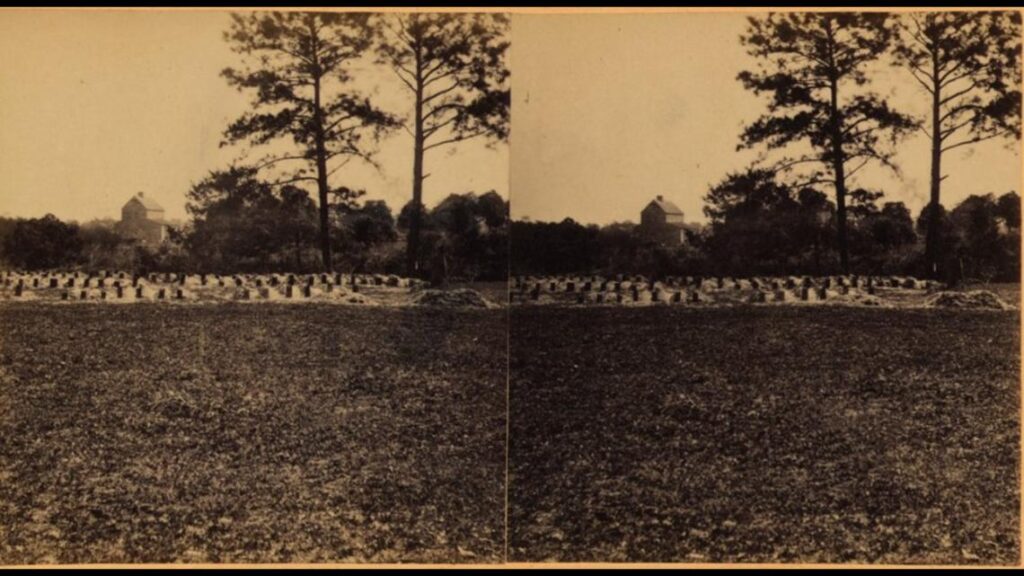One of the earliest Memorial Day observances occurred on May 1, 1865. Organized by freed slaves and white missionaries.
UNITED STATES, — Memorial Day is one of the United States’ most solemn federal holidays. It is dedicated to honoring and mourning U.S. military personnel who died while serving in the Armed Forces. Observed on the last Monday of May, the holiday also marks the unofficial beginning of summer in the United States, drawing millions to cemeteries and memorials across the nation.
The U.S. Department of Veterans Affairs uses this quote on its website:
“That Nation which respects and honors its dead, shall ever be respected and honored itself.”
– Brevet Lieut.-Col. Edmund B. Whitman, 1868
The tradition centers on visiting burial grounds and monuments to mourn military personnel who died in the line of duty. Volunteers place American flags on graves in national cemeteries, while family members and friends lay flowers and pay their respects to those who made the ultimate sacrifice for their country.
Originally known as Decoration Day, Memorial Day’s roots trace back to America’s bloodiest conflict, the Civil War, which claimed approximately 620,000 soldiers’ lives, with about two-thirds dying from disease rather than battle wounds. The work of honoring the dead began immediately across the country, leading several American towns to claim the birthplace of what would become Memorial Day.
The first national observance occurred on May 30, 1868, when Commander in Chief John A. Logan of the Grand Army of the Republic proclaimed the holiday to honor Union soldiers who had died in the Civil War. This national declaration followed numerous local observances that had emerged between the war’s end and Logan’s proclamation. Many cities and individuals have claimed to be the first to observe the holiday.
The National Cemetery Administration, a Department of Veterans Affairs division, credits Mary Ann Williams with originating the idea of decorating Civil War soldiers’ graves with Union and Confederate flowers.
Researchers have documented the earliest annual commemoration to women who laid flowers on soldiers’ graves in the Civil War hospital town of Columbus, Mississippi, in April 1866.
However, historical evidence reveals an even earlier and more significant commemoration that has long been overlooked in mainstream narratives.
The Associated Press states that over 10,000 people, most of them Black, held a parade and dedicated graves in 1865.
“In 1871, abolitionist Frederick Douglass feared Americans were forgetting the Civil War’s impetus — enslavement — when he gave a Decoration Day speech at Arlington National Cemetery,” the article states.
According to historian David Blight’s research, documented in his 2001 book “Race and Reunion: The Civil War in American Memory,” and acknowledged by the Department of Veterans Affairs, one of the most important early Memorial Day observances took place on May 1, 1865, in Charleston, South Carolina. Freed slaves and white missionaries organized this commemoration at a former planters’ racetrack where Confederates had held captured Union soldiers during the war’s final year.
At least 257 prisoners died at the site, many from disease, and were buried in unmarked graves. Black residents of Charleston decided to give these fallen soldiers a proper burial. In approximately 10 days leading up to the event, roughly two dozen Black American Charlestonians reorganized the graves into orderly rows and constructed a 10-foot-tall white fence around them. An archway overhead proclaimed “Martyrs of the Race Course” in black letters.
Time Magazine reported coverage in the Charleston Daily Courier and the New York Tribune, about 10,000 people, mostly black residents, participated in the May 1 tribute. The ceremony began at 9 a.m. with approximately 3,000 black schoolchildren parading around the racetrack, carrying roses and singing the Union song “John Brown’s Body.” Adults representing aid societies for freed black men and women followed in the procession.
Black pastors delivered sermons and led attendees in prayer and spiritual singing, while picnics created a communal atmosphere of remembrance.
This origin story was largely suppressed from historical memory. Yet, the U.S. National Park Service has a webpage dedicated to the day’s history.
Throughout the Reconstruction era, Black Americans maintained a prominent role in Memorial Day observances, especially in the South, where they comprised the vast majority of participants. At the same time, federal forces still policed the decoration of Confederate graves. After Reconstruction ended in 1877, Black American orators used Memorial Day speeches to challenge efforts to rehabilitate the Confederate cause.
Through the 1880s and into the 1910s, Black American veterans claimed prominent positions in Memorial Day observations.
The holiday’s scope expanded significantly over time. In 1898, in a spirit of national reconciliation, President William McKinley opened National Cemeteries to Confederate war dead. Following the Spanish-American War and World War I, Memorial Day evolved to honor all American war dead, not exclusively Union soldiers.
Official recognition as a holiday spread gradually among states, beginning with New York in 1873. By 1890, every Union state had adopted the observance. Congress moved its observance to the last Monday in May, and in 1971 standardized its name as “Memorial Day.”
According to the U.S. National Park Service, the role of Black Civil War veterans in Memorial Day observations persisted until the final Black veteran of that war passed away.
“Joseph Clovese was born into slavery on a Louisiana plantation in January 1844. He fled in 1862, serving as an infantryman in the 63rd United States Colored Infantry. Clovese was one of only six members of the G.A.R. healthy enough to attend the organization’s final reunion in 1949,” the article stated.
Just one of thousands of veterans who are honored and remembered for their sacrifice on this day.
Today, Memorial Day differs from two other military-related observances: Armed Forces Day, held earlier in May to honor those currently serving, and Veterans Day on November 11, which honors all who have served in the United States Armed Forces.


